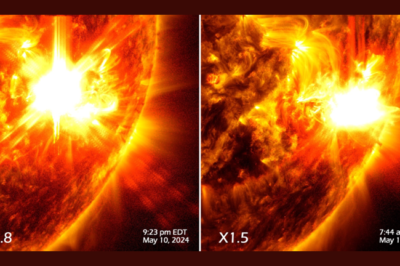
NASA’s Solar Dynamics Observatory recently captured striking images of two powerful solar flares emanating from the sun. Classified as X5.8 and X1.5-class flares, these events are among the strongest solar flares observed, with the X-class denoting the most intense category. These flares occurred on May 10 and 11, 2024, with peaks at 9:23 p.m. EDT and 7:44 a.m. EDT, respectively.
These solar flares resulted in coronal mass ejections (CMEs) directed towards Earth, prompting the National Oceanic and Atmospheric Administration (NOAA) to issue alerts due to potential impacts on Earth’s technological systems. Geomagnetic storms caused by these CMEs can disrupt magnetic fields on Earth, affecting power grids, communication networks, and satellite operations, posing significant risks to our technology-dependent infrastructure.
As the solar storm approached, it also created a stunning visual display in the night sky. Auroras, commonly known as northern or southern lights, were visible in vibrant shades of pink, green, and purple. This celestial spectacle was enjoyed by skywatchers around the world, with some of the best views from northern Europe and Tasmania, Australia.
Elon Musk, CEO of SpaceX and Starlink, commented on the impact of the solar storm on satellite operations, noting the challenges it posed. However, he reassured that SpaceX’s satellites are designed to withstand such solar events, reflecting the importance of preparedness in space technology.








































Leave a Reply